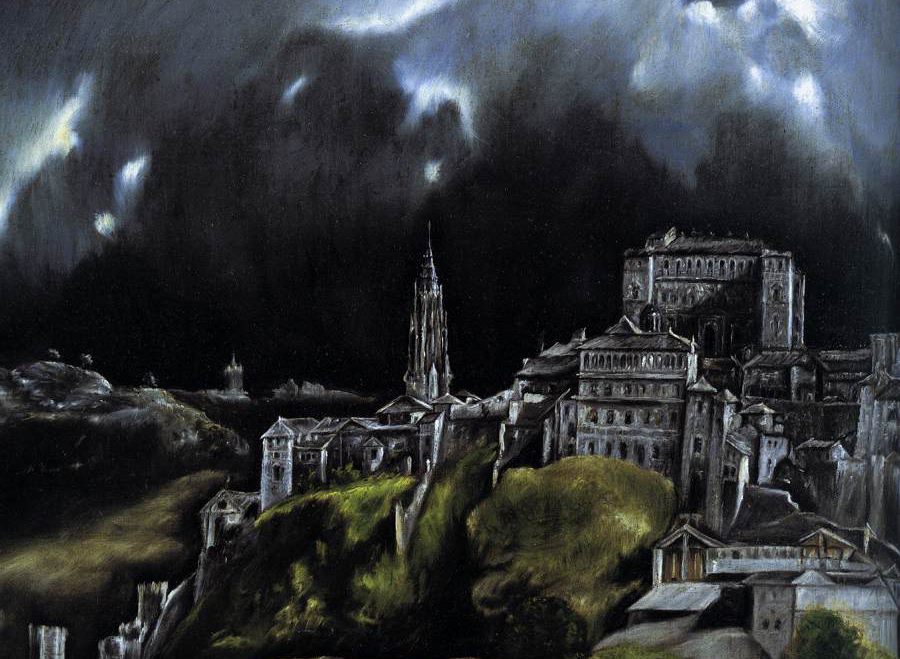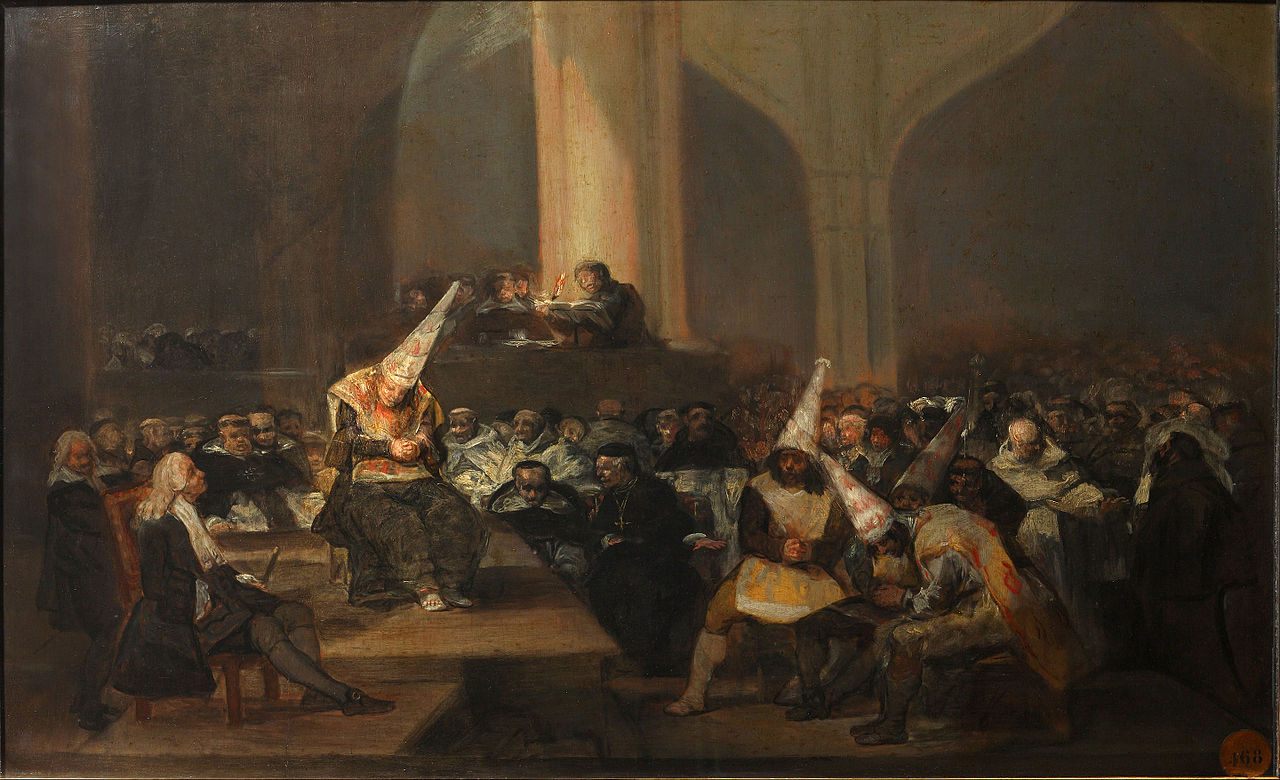How Racism Was First Officially Codified in 15th-Century Spain
In 1449, a Toledo edict made racial discrimination legal.

In 1449 rebels in Toledo, Spain, published an edict you’ve probably never heard of, but whose effects still resonate today. It was the first set of discriminatory laws based on race.
You probably know about the widespread mistreatment of Jews in Spain, even if your first thought when someone says “Spanish Inquisition” is a Monty Python sketch. But Spanish and Portuguese antisemitism isn’t just a historical artifact. According to historians like David Brion Davis, the Spanish categorization and treatment of Jews “provided the final seedbed for Christian Negrophobic racism,” and “gave rise to a more general concern over ‘purity of blood’—limpieza de sangre in Spanish—and thus to an early conception of biological race.”
The discrimination against Spanish Jews peaked decades earlier, in 1391, when a fanatical priest incited anti-Jewish mobs with the slogan “convert or die.” A third to a half of the Spanish Jews—the largest community in Europe at the time—were converted to Christianity, the greatest mass conversion in modern Jewish history.


Some “conversos” became enormously successful, a success that fostered widespread resentment against these “New Christians”. During a period of political instability in 15th century Castile, conversos, as supporters of the kings, became scapegoats for weak rulers. In some cities physical battles broke out between “Old Christians” and “New Christians” (converted Jews).
The most important of these conflicts took place in Toledo, and began as a tax revolt. On January 25, 1449, Alvaro de Luna, a favorite of King Juan II, demanded from Toledo a loan of one million maravedis. The townspeople actively resisted payment, and a mob quickly obtained control of the city gates.
A local official, Pero Sarmiento, joined the rebellion. On taking control of the city, he announced he was compelled to act by “the need to remove Alvaro de Luna from the Court.”

Their relative wealth made conversos a tempting target. Sarmiento and his followers used the revolt as a pretext to confiscate their targets’ belongings. Sarmiento ordered converso leaders arrested and tortured until they admitted to conspiring with de Luna against the city government.
Up to this point, all accusations had been political. But in order to justify the looting, Sarmiento’s followers floated rumors that conversos were still secretly practicing the Jewish faith and were working against the Church. Sarmiento formed an inquisition to punish conversos.
On June 5, 1449, Sarmiento issued the Sentencia-Estatuto, the first set of racial exclusion laws in modern history. It barred conversos, regardless of whether they were sincere Christians, from holding private or public office or receiving land from the church benefices unless they could prove four generations of Christian affiliation.
The Sentencia introduced race into Spain. Conversos, it claimed, came from the “perverse lineage of the Jews,” and thus brought the “same harms, evils and wars which the Jews, the enemies of our Holy Catholic faith, have always brought.”
The anti-Semitism expert Leon Poliakov deemed this “the first example in history of legalized racism.” It also constituted the first anti-Semitic restrictions—discrimination based on a racial, rather than a religious, definition of Judaism.
This Toledo innovation went viral. Other localities soon followed Toledo’s example. For example, Córdoba banned conversos from office and exiled most conversos. Guipúzcoa prohibited conversos from living or marrying there.
Schools also embraced restrictions on converso students, starting with the Colegio de Santa Cruz de Valladolid in 1488. By 1537, conversos were barred from the Universities of Salamanca, Valladolid, Seville and Toledo. By the early sixteenth century, cathedral chapters began to bar conversos from church offices.
The crime of which those of Jewish lineage were guilty was deicide. The alleged Jewish role in killing Christ was a kind of original sin, inherited by Jews and passed down in the blood. Because the act superseded the rite of baptism, baptism could not purge conversos of this crime.
The phrase limpieza, “purity of blood,” came into common use in the sixteenth century. The phrase was understood literally, not metaphorically: Medical belief held that blood was the principal of four humors in the body, because it circulated the other humors. Blood therefore played an essential role in establishing a person’s character.
The most important conflict over limpieza discrimination came in the mid-16th century. The Toledo archbishop, Juan Martínez Silíceo, limpieza’s strongest proponent, recommended imposing purity-of-blood restrictions in his archdiocese.

The most prominent cleric to resist this was Ignacio de Loyola, founder of the Jesuit order. Loyola befriended Spanish conversos at the University of Paris, who eventually became some of the founding members of the Jesuits. Diego Lainez, a converso, succeeded Loyola as the order’s superior general.
The prominence of conversos within the Jesuits meant it was inevitable that the order would come into conflict with Archbishop Silíceo. Silíceo banned members of the order from acting as priests without first being personally examined by him. Jesuits could only win Silíceo’s favor by adopting limpieza, and Loyola refused to comply. This significantly impeded the growth of the order in Spain.
But the resonances of Spanish limpieza restrictions went far beyond their effect on the Jesuit order. Iberian initiatives—African race slavery, the discovery of America, the development of plantation agriculture—made limpieza a force in the development of anti-black racism.
Beginning in the 1440s, Spain and Portugal entered the African slave trade, formerly dominated by Islamic countries. The discovery of America and the development of plantation agriculture considerably expanded African slavery. Between 1500 and 1580 Spain shipped approximately 74,000 African people to America; this number increased to approximately 714,000 between 1580 and 1640.

Along with slavery, Spain exported limpieza. In 1552, the Spanish Crown decreed that emigrants to America must furnish proof of limpieza. The Spanish deployed limpieza throughout Spanish America and the Portuguese adopted it in Brazil. In its new environment, limpieza began to mutate, beginning to refer to an absence of black blood as well as an absence of Jewish blood.
In both cases, the idea was that “impure” blood could taint a person’s character. In 1604, historian Fray Prudencio de Sandoval compared the impure natures of blacks and Jews: “Who can deny that in descendants of Jews there persists and endures the evil inclination of their ancient ingratitude and lack of understanding, just as in the Negroes [there persists] the inseparability of their blackness. For if the latter should unite themselves a thousand times with white women, the children are born with the dark color of the father. Similarly, it is not enough for the Jew to be three parts aristocrat or Old Christian, for one Jewish ancestor alone defiles and corrupts him.”
The main target of limpieza in the Americas was black blood. Limpieza was used to discriminate against Africans both to justify race slavery and to enforce the distinctions that a race slave system required.
The operation of limpieza in the Americas mimicked its viral spread in Spain. Limpieza excluded persons with black blood from civil and religious offices and various fields of commercial endeavor. It was not until 1707 that persons of African descent could take up Holy Orders. Royal decrees barred university admissions to people with African blood.
From Spanish America limpieza expanded to influence racial attitudes in the British colonies. By the time slaves were introduced in Virginia, the Spanish had over a century of experience with slavery. The American colonies looked to Latin America to help them develop this peculiar institution. As the historian Alden Vaughn notes: “Because the Latin American model of lifetime, inheritable servitude was apparent to everyone—Spanish and Portuguese colonists held a quarter of a million black slaves by 1617—Virginians had no need to invent a new status.”
The vocabulary the English colonies adopted for race had roots in the Spanish colonies. “Negro” came into English from Spanish in the mid-16th century and “mulatto” a half century later. “Sambo”—in Spanish a mix of “black” and “Indian”—became a derogatory word for blacks in English.
Even the word “race” came from Spain, where it was used to refer to people of Jewish descent. As the social anthropologist Audrey Smedley explains in Race in America: “In fact, ‘race’ did not appear in the English language … with reference to human groups until the seventeenth century. . . It is quite likely that the English adopted the term ‘race’ from the Spanish.”
While the Spanish used “blood” in the racial context by the sixteenth century, the English examples of this period pertain to family relationships of aristocratic descent. It was not until the eighteenth century that the English colonies used “blood” in a racial context.
Memoirs of a Huguenot Family, the account of an American settler in Virginia printed in 1757, contains a condemnation of miscegenation that incorporates purity-of-blood concerns. The author writes of whites who mixed with blacks, complaining of “this abominable practice which has polluted the blood of many among [them],” adding, “We … should not have smutted our blood.”
Thomas Jefferson expressed similar concerns about miscegenation. He said that Blacks should “be removed beyond the reach of mixture” so that they could not stain “the blood of [their] master.”
It was now the 18th century. Limpieza—born three centuries earlier in Toledo, Spain—was now embedded in the consciousness of the new American nation.
This article was adapted from the book Exiles in Sepharad: The Jewish Millennium in Spain.








Follow us on Twitter to get the latest on the world's hidden wonders.
Like us on Facebook to get the latest on the world's hidden wonders.
Follow us on Twitter Like us on Facebook